Igor Melatti
A Two-Layer Near-Optimal Strategy for Substation Constraint Management via Home Batteries
Aug 15, 2021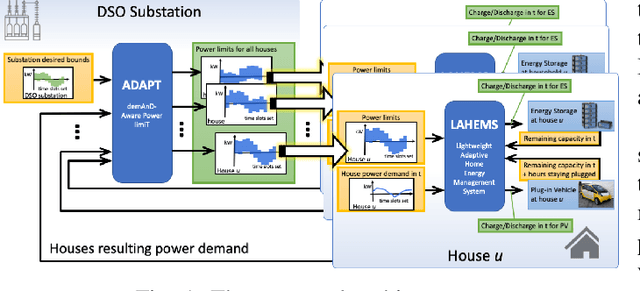

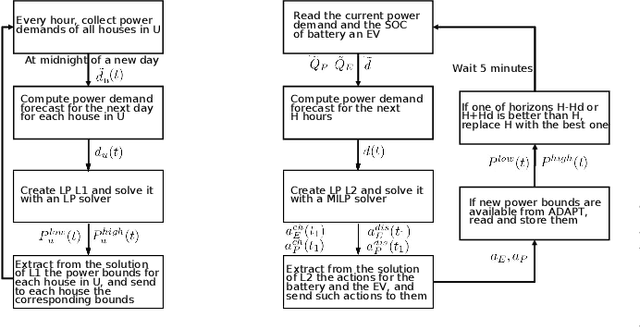
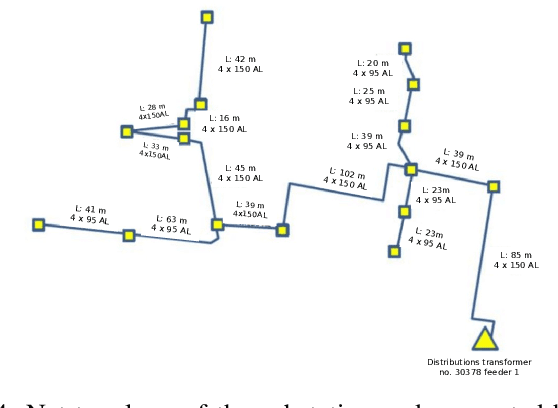
Abstract:Within electrical distribution networks, substation constraints management requires that aggregated power demand from residential users is kept within suitable bounds. Efficiency of substation constraints management can be measured as the reduction of constraints violations w.r.t. unmanaged demand. Home batteries hold the promise of enabling efficient and user-oblivious substation constraints management. Centralized control of home batteries would achieve optimal efficiency. However, it is hardly acceptable by users, since service providers (e.g., utilities or aggregators) would directly control batteries at user premises. Unfortunately, devising efficient hierarchical control strategies, thus overcoming the above problem, is far from easy. We present a novel two-layer control strategy for home batteries that avoids direct control of home devices by the service provider and at the same time yields near-optimal substation constraints management efficiency. Our simulation results on field data from 62 households in Denmark show that the substation constraints management efficiency achieved with our approach is at least 82% of the one obtained with a theoretical optimal centralized strategy.
MILP, pseudo-boolean, and OMT solvers for optimal fault-tolerant placements of relay nodes in mission critical wireless networks
Jun 20, 2021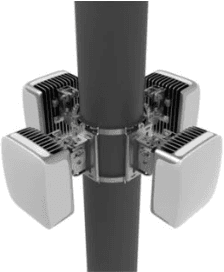
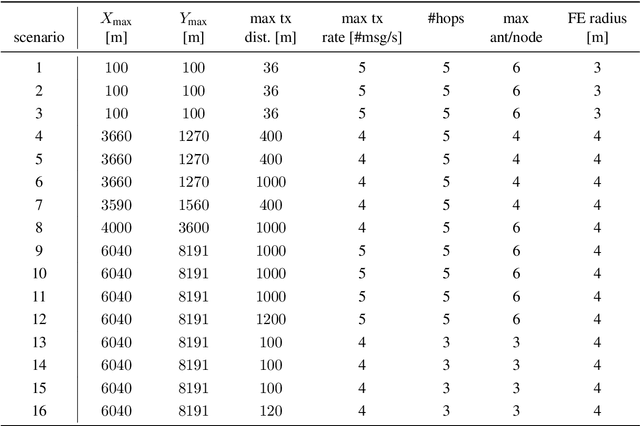

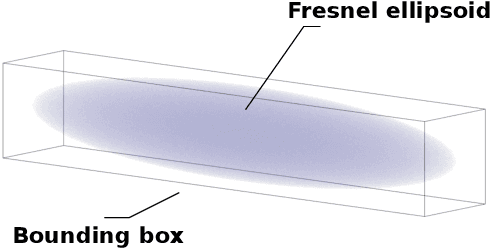
Abstract:In critical infrastructures like airports, much care has to be devoted in protecting radio communication networks from external electromagnetic interference. Protection of such mission-critical radio communication networks is usually tackled by exploiting radiogoniometers: at least three suitably deployed radiogoniometers, and a gateway gathering information from them, permit to monitor and localise sources of electromagnetic emissions that are not supposed to be present in the monitored area. Typically, radiogoniometers are connected to the gateway through relay nodes. As a result, some degree of fault-tolerance for the network of relay nodes is essential in order to offer a reliable monitoring. On the other hand, deployment of relay nodes is typically quite expensive. As a result, we have two conflicting requirements: minimise costs while guaranteeing a given fault-tolerance. In this paper, we address the problem of computing a deployment for relay nodes that minimises the relay node network cost while at the same time guaranteeing proper working of the network even when some of the relay nodes (up to a given maximum number) become faulty (fault-tolerance). We show that, by means of a computation-intensive pre-processing on a HPC infrastructure, the above optimisation problem can be encoded as a 0/1 Linear Program, becoming suitable to be approached with standard Artificial Intelligence reasoners like MILP, PB-SAT, and SMT/OMT solvers. Our problem formulation enables us to present experimental results comparing the performance of these three solving technologies on a real case study of a relay node network deployment in areas of the Leonardo da Vinci Airport in Rome, Italy.
* 33 pages, 11 figures
 Add to Chrome
Add to Chrome Add to Firefox
Add to Firefox Add to Edge
Add to Edge